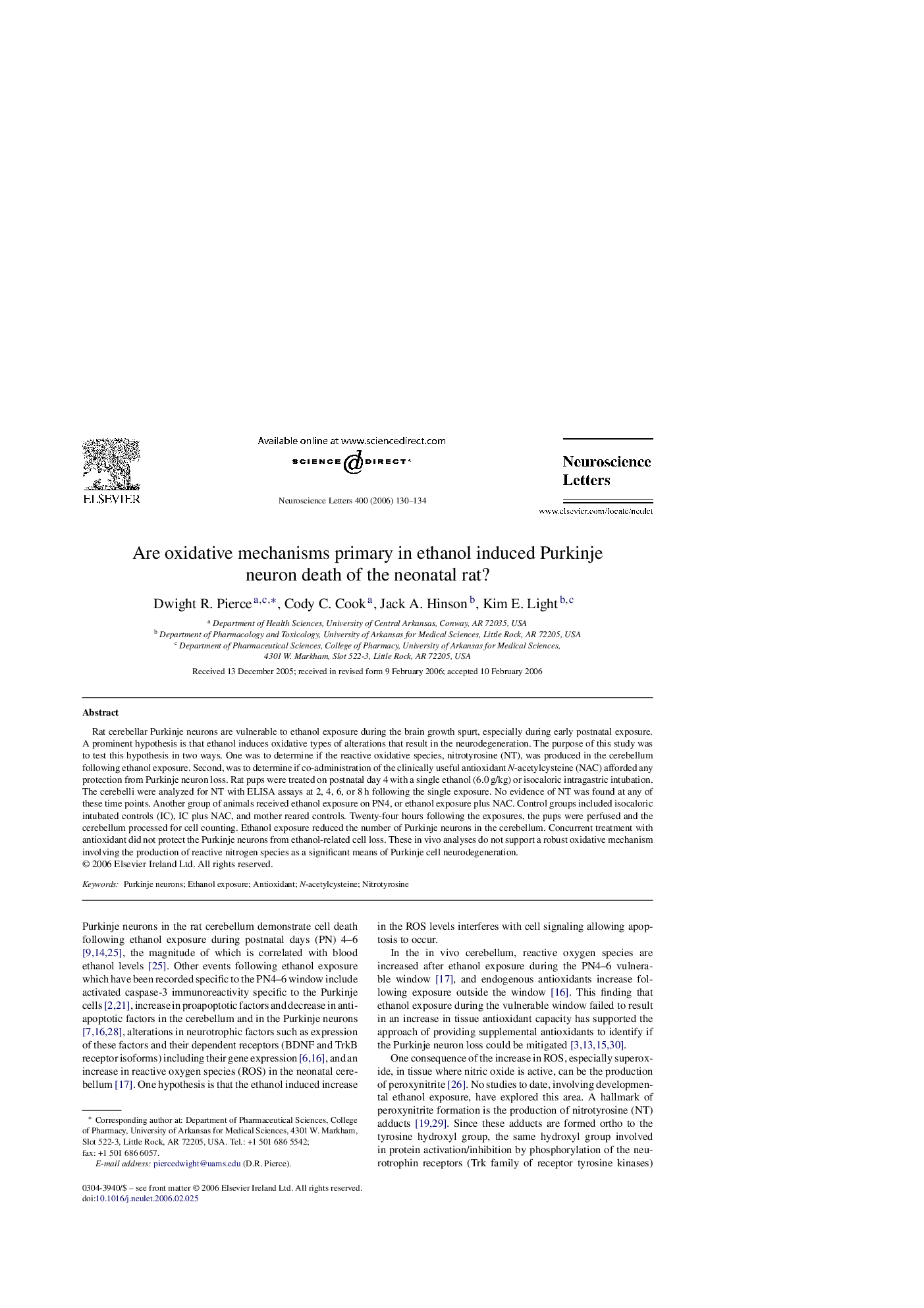| Article ID | Journal | Published Year | Pages | File Type |
|---|---|---|---|---|
| 4350814 | Neuroscience Letters | 2006 | 5 Pages |
Rat cerebellar Purkinje neurons are vulnerable to ethanol exposure during the brain growth spurt, especially during early postnatal exposure. A prominent hypothesis is that ethanol induces oxidative types of alterations that result in the neurodegeneration. The purpose of this study was to test this hypothesis in two ways. One was to determine if the reactive oxidative species, nitrotyrosine (NT), was produced in the cerebellum following ethanol exposure. Second, was to determine if co-administration of the clinically useful antioxidant N-acetylcysteine (NAC) afforded any protection from Purkinje neuron loss. Rat pups were treated on postnatal day 4 with a single ethanol (6.0 g/kg) or isocaloric intragastric intubation. The cerebelli were analyzed for NT with ELISA assays at 2, 4, 6, or 8 h following the single exposure. No evidence of NT was found at any of these time points. Another group of animals received ethanol exposure on PN4, or ethanol exposure plus NAC. Control groups included isocaloric intubated controls (IC), IC plus NAC, and mother reared controls. Twenty-four hours following the exposures, the pups were perfused and the cerebellum processed for cell counting. Ethanol exposure reduced the number of Purkinje neurons in the cerebellum. Concurrent treatment with antioxidant did not protect the Purkinje neurons from ethanol-related cell loss. These in vivo analyses do not support a robust oxidative mechanism involving the production of reactive nitrogen species as a significant means of Purkinje cell neurodegeneration.
